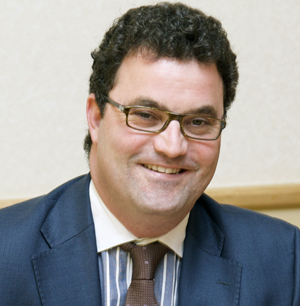Spending by Spain’s National Health Service (NHS) on pharmaceuticals was €12.1 billion in 2010. Its market for prescription medicines is among the slowest growing in Europe,…
Spending by Spain’s National Health Service (NHS) on pharmaceuticals was €12.1 billion in 2010. Its market for prescription medicines is among the slowest growing in Europe, expanding by only 1% for the 12 months to September 2010 – half of the average of 2% for the five largest European markets.
Spending by Spain’s National Health Service (NHS) on pharmaceuticals was €12.1 billion in 2010. Its market for prescription medicines is among the slowest growing in Europe, expanding by only 1% for the 12 months to September 2010 – half of the average of 2% for the five largest European markets. Reimbursement over the same period grew 2.3%, above Italy’s -1.2%, but well below France at 3.3%, the UK at 4.4% and Germany at 4.6%. For the 12 months preceding September 2010, reference priced generics accounted for 23.5% of the Spanish market by value, and 38.2% by volume. The penetration of generics in Spain, however, is low for Europe – about 12% by volume compared to 65% for the UK, for example. The past decade has been a time of major change in Spain’s medicines market, with key events occurring in 2002, 2004, 2006 and 2010.
- In 2002, important responsibilities for health care were devolved to Spain’s autonomous regions. Although market authorisation, pricing and reimbursement for medicines still are decided at national level, regions have been implementing their own policies intended to affect demand and shape the market.
- The change of government in 2004 meant an end to the ‘Stability Pact’ with the industry and the consideration of an array of other measures meant to control spending on medicines, included in the 2004 Strategic Pharmaceutical Plan.
- In 2006, the new Medicines Act was approved, which was (at least partially) based on the 2004 Strategic Plan. The Act introduced a new reference pricing system, replacing the system introduced in 2003, as well as formalising procedures and requirements for reimbursement based on a calculus of need, therapeutic value/utility and ‘degree of innovation’.
In 2010, the reference pricing system again was changed and additional price cuts and rebates requirements were imposed.
- Under the new reference pricing system, the level used to determine price is the least expensive daily treatment cost, based on defined daily dose (DDD). Manufacturers with products whose prices exceed the reference price by more than 30% may either cut prices immediately to the reference level or gradually reduce prices, but not by more than 50% a year. The reference price must be met in two years or the product no longer will be eligible for reimbursement.
- Prices will be reduced by 30% (up from 20%) for reimbursed ambulatory and hospital diagnostic products marketed for over ten years (or eleven years if a new indication has been added), but for which no generic product is marketed in Spain (and so not part of the reference pricing system). This applies only if a cheaper generic or biosimilar is marketed in the EU15; final retail prices cannot be below €1.56. Generic versions in inactive reference price groups are included for the first time.
- In May 2010, new price cuts were imposed on all reference priced generics, ranging from 0%-30% depending on the difference between the generic’s current price and the reference price. Exempted are medicines whose retail price is less than €3.12. Expected savings from these cuts are €169m.
- In June 2010, new rebates were announced affecting only patented medicines reimbursed under the NHS. For all reimbursed medicines not in a reference price group, whether for ambulatory or hospital use, the rebate is 7.5% of the sales to the NHS. Orphan medicines are subject to a 4% rebate. Rebates apply to all parts of the medicine supply chain – manufacturers, wholesalers and pharmacies — each with its own margin. Expected savings from rebates are €700m from manufacturers and €350m from wholesalers and pharmacists.
- In September 2010, the pharmaceutical industry met with the Prime Minister and is requesting the development of a strategic plan. The intent is to create a continuing platform for dialogue between the two parties and ensure some measure of stability in the market environment.
The role of Spain’s autonomous regions has been focused on affecting demand. For example, some regions have established agencies to evaluate therapeutic utility as a basis for creating prescribing guidelines. Serious questions have been raised about the quality of the evaluations and the appropriateness of the consequent guidelines, particularly because both financial and non-financial incentives have appeared to encourage physicians to follow the guidelines.
Other demand-side initiatives include, for example, regional reference pricing systems, binding only when prescription is by active ingredient; increasing generic prescribing; regional tendering; and creating regional catalogues that prioritise reimbursed medicines. Some such efforts, the catalogues, for example, appear to exceed regional authority and are being reviewed by the Department of Health.
Not all regions are equally active, of course, and they vary in the measures taken. For example, Andalusia, Catalonia and the Basque Country have taken the lead in pharmacoeconomic evaluations; Andalusia, the Canaries, Castilla-La Mancha, Castilla y Leon and Valencia have imposed regional reference prices; and Navarra, Extremadura, Catalonia and, soon, La Rioja attempt to shape prescribing and encourage greater use of generics.
For more information, please contact Dr. Jorge Mestre-Ferrandiz at OHE.
